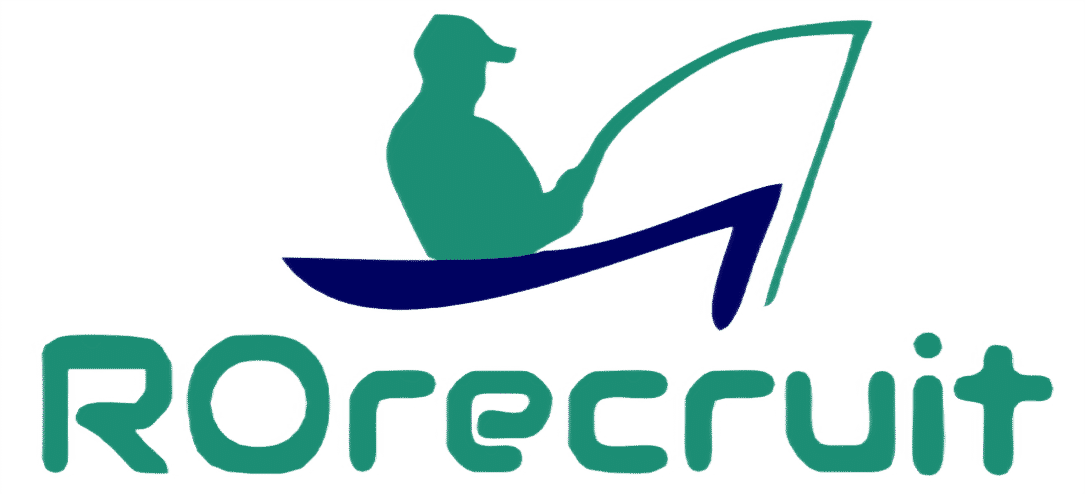You are looking for a job, and finally you found the perfect one that you are sure you fit with all the requirements, you applied for it, NO one contacted you for an interview, your CV even has never been read. (Follow these 9 CV writing tips to make the change).
Sound familiar, right?
Well, let us discuss all what you need to build a professional CV that not only can impress most recruiters, also it can appear with most Application Tracking Systems (ATS) which will raise your chances to be called for interviews in the future.
CV is the First Impression – Make it Impactful and Professional
Your CV is the first point of contact between you and a potential new employer. It is all they may know about you. It seems obvious, but remember to spell and grammar check your CV. This shows attention to detail and doesn’t distract the reader with avoidable errors. Keep in mind font size and color, ensuring that your CV is readable online and in a printable format.
Let’s begin with the definition of “CV”:
1. What is a CV?
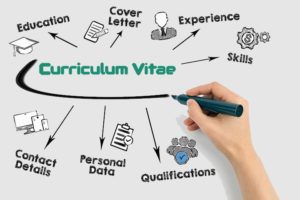
CV stands for “Curriculum Vitae“, (Latin words for: Course of Life), it is a document used when applying for jobs. It allows you to summarize your education, skills and experience enabling you to successfully sell your abilities to potential employers. Alongside your CV, many employers also usually ask for a “Cover Letter”.
In the USA and Canada, CVs are known as “Résumé”. These documents tend to be more concise and follow no particular formatting rules.
2. How long should a CV be?
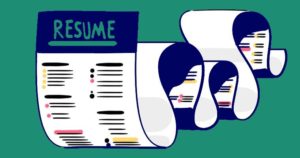
Particularly, one size doesn’t fit all. But in most common practices, a standard Curriculum Vitae should be no longer than two sides of A4.
For example, a recent graduate with minimal experience may only need to use one side of A4. Those in high-level roles or people who have gained a lot of experience or worked in multiple jobs over the last ten or twenty years – although not used as often – a three-page Curriculum Vitae might be needed in these cases.
For example, some medical or academic Curriculum Vitae may be longer depending on their experience. While it’s important to keep your Curriculum Vitae concise, you should also avoid selling your experience short.
To save space only include the main points of your education and experience. Stick to relevant information and don’t repeat what you’ve said in your cover letter. If you’re struggling to edit your CV ask yourself if certain information sells you. If it doesn’t, cut it out. And if it’s not relevant to the job you are applying for, delete it and if it’s old detail from ten years ago, summarize it.
3. What to include in a CV?
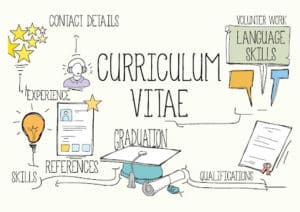
Please follow these CV writing tips when building it with the same order:
1. Contact details – Include your full name, home address, both active mobile number and email address. Your date of birth sometimes is irrelevant, and unless you’re applying for an acting or modelling job, it is okay if you don’t include a photograph.
2. Profile – A CV profile is a concise statement that highlights your key attributes and helps you stand out from the crowd. Usually placed at the beginning of a CV, it picks out a few relevant achievements and skills, while expressing your career aims. A good CV profile focuses on the sector you’re applying to, as your cover letter will be job-specific. Keep CV personal statements short and snappy, a 100-words is the perfect length.
3. Education – List and date all previous education, including professional qualifications. Place the most recent first. Include qualification type/grades, and the dates. Mention specific modules only where relevant.
4. Work experience – List your work experience in reverse date order (again; most recent first), making sure that most of what you mention is relevant to the job you’re applying for. Include your job title, the name of the company, how long you were with the organization, and key responsibilities. Only if you have plenty of relevant work experience, then this section should come before education.
5. Skills and achievements – This is where you talk about the foreign languages you speak and the IT packages you can competently use. The key skills that you list should be relevant to the job. Don’t exaggerate your abilities, as you will need to back up your claims at interview. If you’ve got lots of job-specific skills you should do a skills-based CV.
6. Interests – “Socializing”, “going to the cinema”, “swimming”, “playing Chess” and “reading” aren’t going to catch a recruiter’s attention, please be careful. However, relevant interests can provide a more complete picture of who you are, as well as giving you something to talk about at interview. Examples include writing your own blog or community newsletters if you want to be a journalist, being part of a drama group if you are looking to get into sales and your involvement in climate change activism if you would like an environmental job. If you don’t have any relevant hobbies or interests; just leave this section OUT.
7. References – You don’t need to provide the names of referees at this stage. You can say “references available upon request”, so you can save some space on your CV for something else, also most employers would assume this to be the case, so if you are stuck for space you can also leave this out.
4. Outputs and Achievements, NOT Tasks
One of the most important CV writing tips is to focus on what you have achieved in your previous roles. Quantify. Don’t just list a range of tasks, but focus on the outcomes/deliverables of your work and experience, and provide honest evidence. Bullet point achievements and key points rather than writing them in paragraphs. Don’t make each point too complicated and don’t include too many points in your list.
5. CV format (Please be careful with these CV writing tips)
- Avoid titling the document with “curriculum vitae” or “CV”. It’s a waste of space. Instead let your name serve as the title.
- Section headings are a good way to break up your CV. Ensure they stand out by making them larger (font size 14 or 16) and bold.
- Avoid fonts such as Comic Sans. Choose something professional, clear and easy to read such as Arial, Calibri or Times New Roman. Use a font size between 10 and 12 to make sure that potential employers can read your CV. Ensure all fonts and font sizes are consistent throughout.
- List everything in reverse chronological order. Then the recruiter sees your work history and most recent achievements first.
- Keep it concise by using clear spacing and bullet points. This type of CV layout allows potential employers to skim your CV and quickly pick out important information first.
- Name the document when saving – Don’t just save as “Document 1”. Make sure the title of the document is professional and identifies you, such as “Joe-Smith-CV”.
- Always save your CV as “PDF” file extension to make sure it can be opened and read on any machine, unless the job advert states differently (for example, it may ask you to provide your CV and cover letter as a Word document).
- If you are posting your CV, print it on white A4 paper – Only print on one side and don’t fold your CV – you don’t want it to arrive creased.
6. Learn and follow these CV writing tips
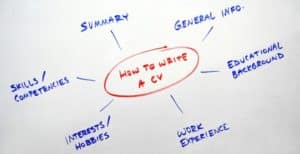
- Use active verbs when possible. For example, include words like “created”, “analyzed” and “devised” to present yourself as a person who shows initiative.
- A good CV doesn’t have any spelling or grammar mistakes. Use a spell checker and enlist a second pair of eyes to check over the document.
- Avoid generic, over-used phrases such as “team player”, “hardworking” and “multitasker”. Instead, provide real-life examples that demonstrate all of these skills.
- Tailor your CV. Look at the company’s website and social media accounts, look to see if they have recently been mentioned in the local press and use the job advert to make sure your CV is targeted to the role and employer.
- Create the right type of CV for your circumstances. Decide whether the chronological, skills-based or academic CV is right for you.
- Make sure your email address sounds professional. If your personal address is inappropriate create a new account for professional use.
- Don’t lie or exaggerate on your CV or job application. Not only will you demonstrate your dishonesty to a potential employer, but there can be serious consequences too. For example, altering your degree grade from a 2:2 to a 2:1 is classed as degree fraud and can result in a prison sentence, or at least if the employer discovered any major lies in your CV then they have the right to end your contract directly.
- Always include a cover letter unless the employer states otherwise. It will enable you to personalize your application. You can draw attention to a particular part of your CV, disclose a disability or clarify gaps in your work history.
7. Covering Letter

Your CV is a statement and will often be accompanied by a covering letter (maximum one page), which should be tailored to the role, emphasizing why your application (skills/experience) is a “fit” to the advertised position. There are numerous websites to start or develop your cover letter. CIPD (Chartered Institute of Personnel & Development) holds some great information on this.
8. Get someone to read over your CV
One of the important CV writing tips is that before sending it to a potential employer, have someone sense-check it for you. If you know someone who works in a similar role or company to the job you’re applying for, they may make useful critics. But don’t worry if not. Someone who has good English reading and writing skills would be great to check for any small mistakes.
A second pair of eyes is important to ensure you present yourself in the best light from the start. You may have spent a long time searching for the right job and crafting your CV, it would be a shame for something like a spelling or grammar mistake to stop you getting an interview.
9. How to fill the gap left by the pandemic?
The first thing to know is that pandemic has disrupted the career plans of thousands of people around the world and you’re not alone. As a result of the pandemic career-boosting activities such as work experience, internships and volunteering have been postponed or cancelled. If this has left you worrying about the corona-shaped gap on your CV let us put your mind at rest.
Employers understand the challenges caused by lockdowns only too well and they will not expect you to have completed a period of work experience in this time. That said you could still demonstrate to potential employers how you used this time wisely – showing yourself to be a proactive, dedicated and resilient candidate, like the following:
You could mention:
- Details of online courses or Massive Open Online Courses you’ve undertaken or webinars or online events you’ve attended.
- The acquisition of new skills, such as learning a language or learning to code.
- Volunteering work such as checking in on and shopping for vulnerable neighbors or caring for young siblings or elderly relatives.
- Charity work – perhaps you got involved with fundraising or raising awareness of a particular organization.
- New hobbies such as starting to vlog, picking up a sport, learning to cook or setting up a community book club.
Remember – you’ll need to relate these CV writing tips to the job you’re applying for so focus on the skills these activities taught you and how/why they’d be useful. Where to put this information depends on the activities. Volunteering or charity work can be included under the “Work experience” heading. The online courses and additional qualifications you’ve gained can go in the “Education” section while any new skills you’ve learned need to be housed under “Skills and achievements”. If any new hobbies are relevant to the role you’re applying for, place these in the “Hobbies and interests” section.
